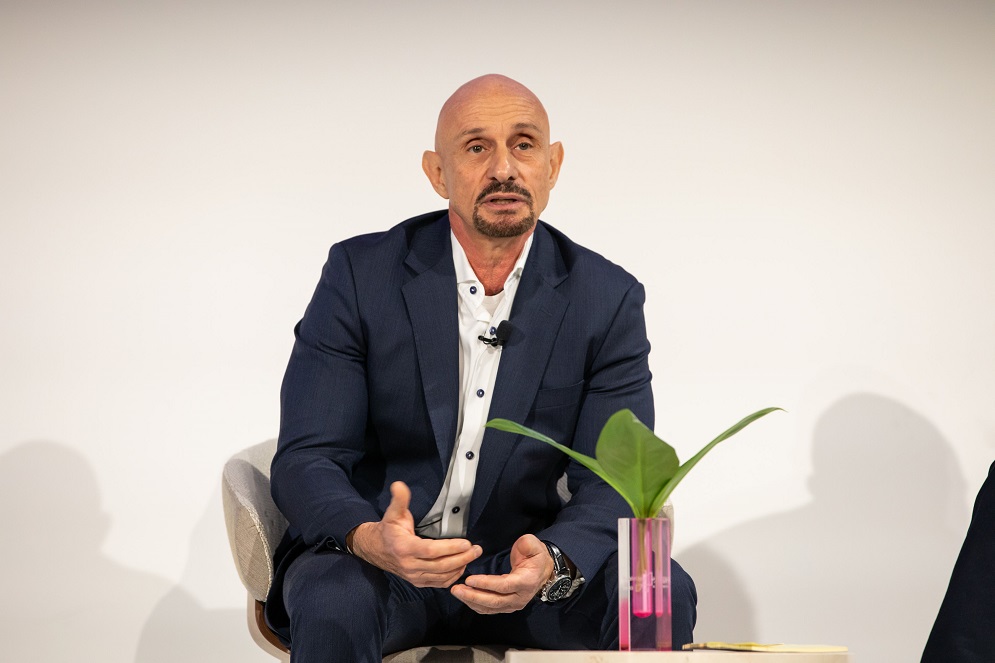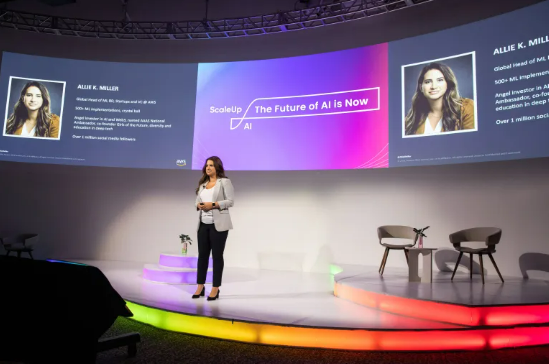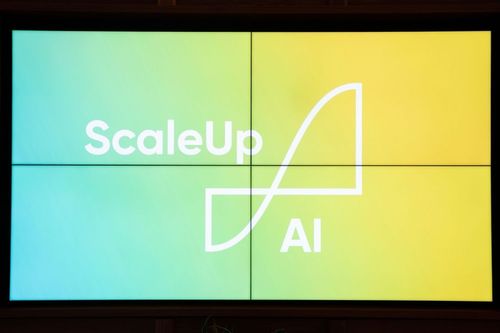Data, talent, platforms and trust: these are the four key pillars firms need when building AI into their applications according to Procter & Gamble’s chief information officer Vittorio Cretella.
During his keynote at the ScaleUp: AI conference in New York earlier this month, Cretella explained that artificial intelligence was embedded in every single aspect of the consumer packaged goods company’s operations.
The 184-year personal care giant (whose super brands include Pampers, Crest, Gillette and Ariel) uses AI for applications including the monitoring of stock inventory during the phasing in and out of products to avoid scrap – a move which Cretella has credited with saving P&G $60m annually.
Cretella (pictured) said that scaling up with AI for a Fortune 50 company was “extremely important” and required four key ingredients: “Data, Talent, Platforms and Trust”.
Other AI uses include visual recognition technology for prime product placement in stores and online; in production lines for preventative maintenance and for product innovation, where engineers can analyse data on products.
According to the CIO, because P&G has “hundreds of different use cases for AI and ML” the data it gathers needs to be useable for cross functional use cases.
Like many large enterprises with legacy architecture that wasn’t built around transaction systems of functions, P&G needed to find a way to break down data silos. So, the firm made the decision to consolidate all its information into one 10 Petabyte data lake.
“Consolidating data was important because the concept of data mesh and the fact that you can use data regardless of where it sits is not ready for scaled use yet,” he added.
Talent pool
In terms of talent, P&G has over 200 data scientists working on staff, which, while forming part of the organisation’s technical operation are also embedded into individual business units.
“They go after use cases but also customisation – so you might have a powerful algorithm but need to customise it for that last mile of the task,” said Cretella.
The exec added that P&G’s talent strategy is 50% internal and 50% external: “This gives us a good balance because on one hand we have immediate internal expertise but at the same time this enables us to tap into partners to cope with spikes in demand,” he explained.
The company’s algorithms need to be deployed across a broad range of business use cases – and this is what Cretella means by his third key pillar – platforms.
He offers up the example of neighbourhood analytics – how it figures out the provision of a clustering of stores based on consumer demand signals.
“This can be used for a range of use cases from sales and marketing to supply chain. We used this during Covid when stores were reopening– looking at which type of stores work best for us in that specific cluster.”
In this instance, he explained, the firm would take an algorithm ‘platform’ and then customise it in the long tail for this specific use case to create value.
Cretella’s final ingredient, trust – and getting middle management to “trust the machine” – is as much about managing a company’s change culture as it is about the technology.
“Many players who have had years of experience in running the business are now being asked to trust an algorithm to tell them what to do,” he said.
“Explainability alone will not solve the problem of the black box of the algorithm – it must be complimented by a couple of things; making people familiar with the concept of algorithms and how they work and how they can help make better decisions.
“And also support from leadership, making sure there is space to adopt and experiment,” he added.
Automation for scale
For Cretella, the only way to successfully scale up and accelerate the company’s current AI journey is through automation: “Automation of data; automation of model development and automation of risk management.”
Because so much time is dedicated to retrieving data, cleansing data and making it usable in the algorithm process, P&G has developed its own code to enable the automation of data pipelines – known internally as ‘Turbine.’
This ‘extract, transform and load’ code, explains Cretella, enables scientists to create those data streams to make them available for the algorithm process and gives more speed in the data integration and data building process.
“Now we are building an AI factory to automate the model development process and the algorithm building process,” he revealed.
The CIO added that time also needs to be spent managing bias and algorithm drift during its deployment. To this end, P&G employs its own risk management officers – independent analysts whose job is to decide whether an AI-related project should go forward or whether it needs to be refined more before production.
“We want to avoid bias and risk in those million-dollar decisions we take with AI,” Cretella added.
All P&G’s AI efforts are supported by partnerships it has made with “the hyperscalers” (Amazon, Google etc) and the solutions which they embed in the cloud.
The firm has also put some of its tech out there via open source for the external developer community to encourage innovation, and the consumer goods giant is also working with several start-ups.
Looking to the near future, Cretella said he was also excited about the prospect of closing the loop between “consumer usage and consumer behaviour” so that P&G can feed its algorithms with more data based on real-time customer feedback. “That’s not possible today, but it will be soon,” he said.
“It’s an exciting time with AI and ML becoming mainstream and pervasive across the business and it is helping us to build superior solutions for billions of consumers around the world,” he concluded.
Written by Ann-Marie Corvin and republished with permission from TechInformed.



